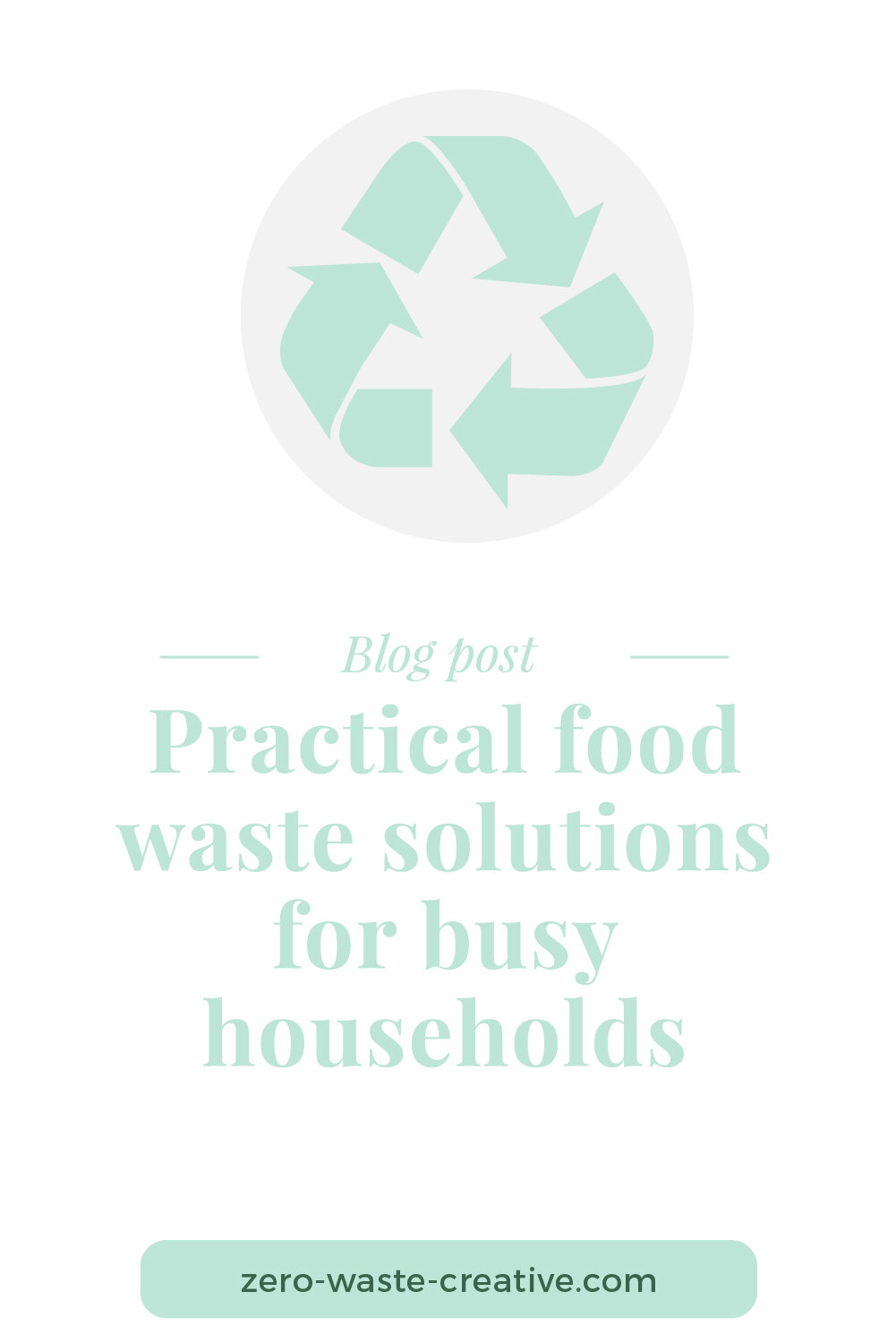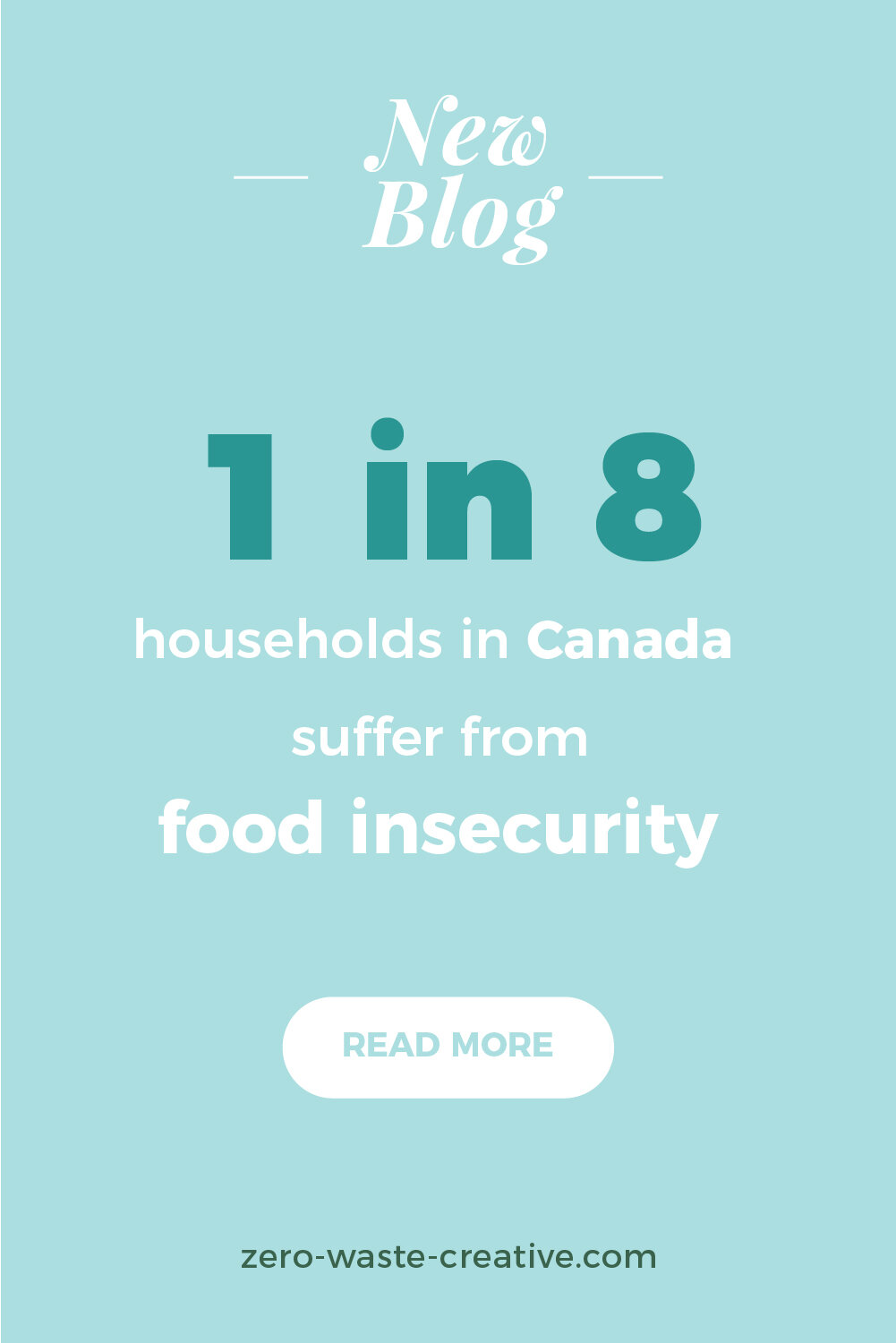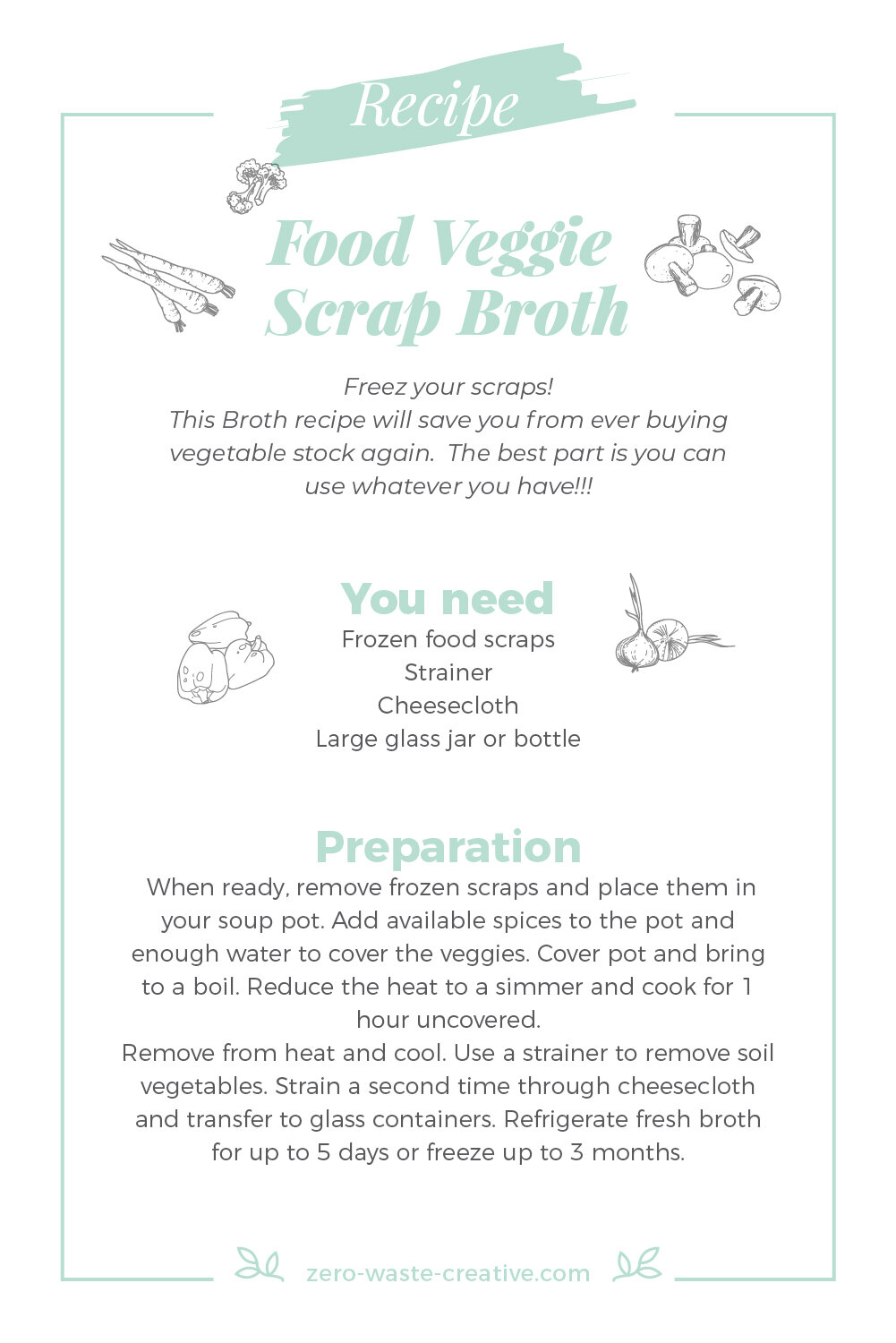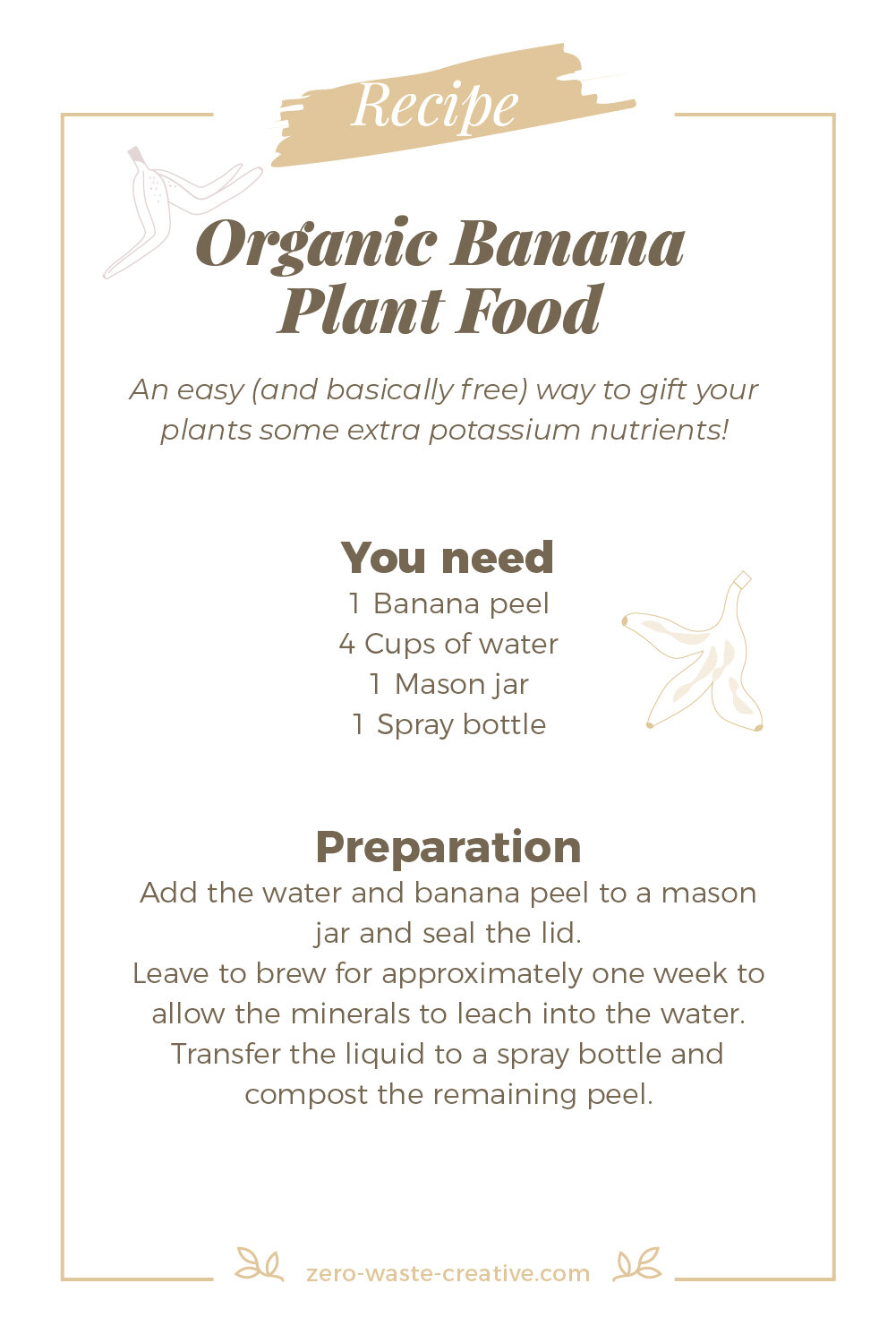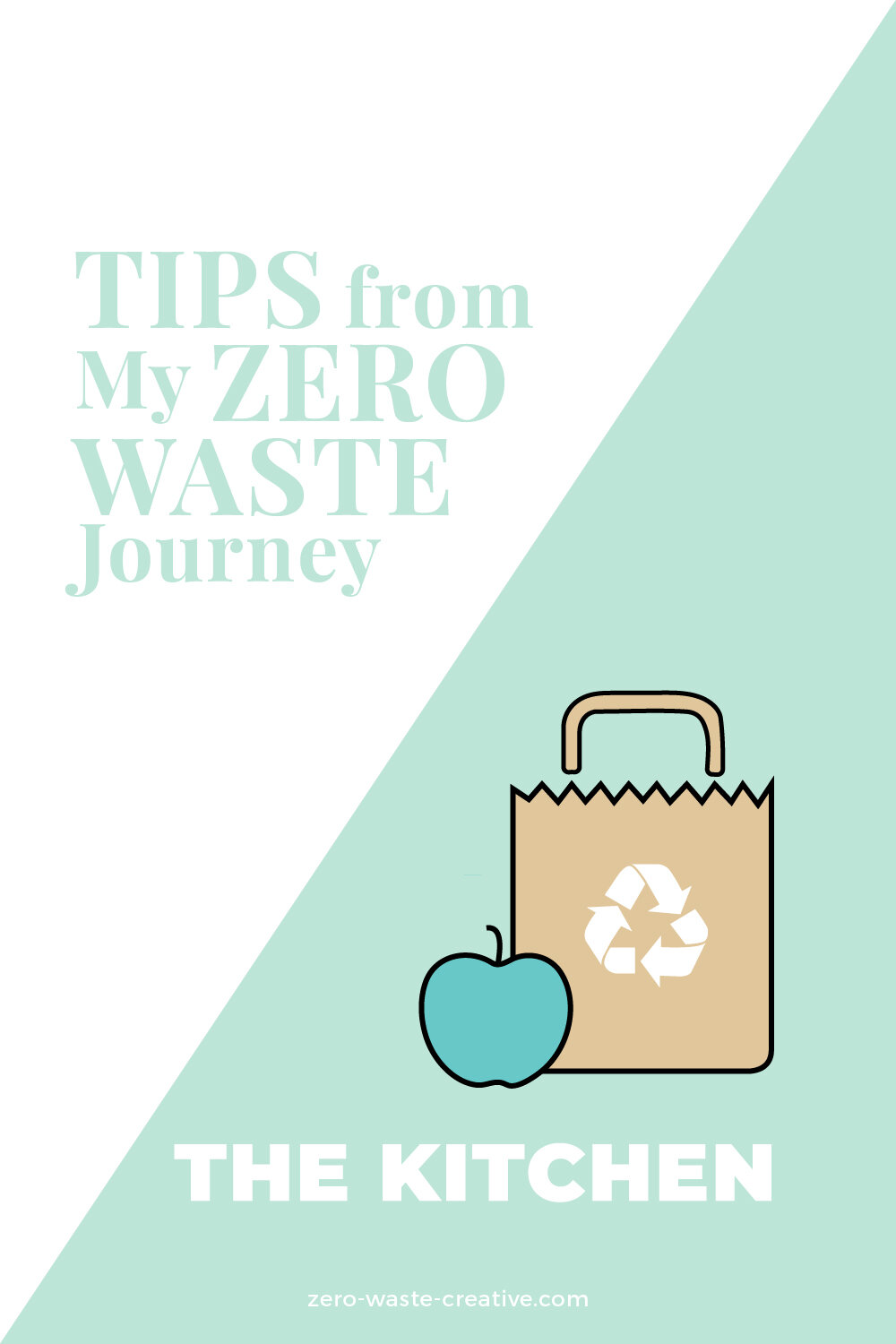Practical Food Waste Solutions for Busy Households
In this week’s blog post I want to tackle the monster that is food waste.
At the beginning of my zero waste journey, I was challenged to reflect on not only my food packaging but the actual food waste my household was producing as well. By sifting through my weekly waste I was shocked to see the volume of spare bits from cooking. What seemed to be insignificant scraps at the time of disposal had amounted to a small mountain at the bottom of my bin. (I highly recommend everyone goes through their trash, it’s an eye-opening exercise)
I realize I needed to work to minimize this — so where did I start? With some research of course! I found a research report by the National Zero Waste Council conducted in March 2020 called “Less Food Loss and Waste, Less Packaging Waste” and the results were rather shocking. The research focuses on reducing waste by changing packaging and establishing a circular economy. Feel free to read through the entire report in your spare time, but for those on a schedule, I will summarize my findings here.
In Canada alone, each year, 11.2 million metric tonnes of avoidable food loss waste occurs. The financial value of this potentially rescuable food is $49.46 billion. That’s almost 50 BILLION DOLLARS’ worth of food A YEAR that could be used to feed families instead of being thrown in the trash. Oh ya, that amount also adds 22.2 million tonnes to Canada’s CO2 emissions and 1.4 billion tonnes to our blue water footprint yearly.
“There is presently a lack of incentives for the food industry to modify its marketing practices to proactively reduce food loss waste along the value chain, and motivate consumers to purchase and manage food and packaging in the home more responsibly. There is also a lack of incentives for companies to design products for recycling and composting and challenges for municipalities that want to collect certain organic waste and packaging materials” Source
I could write multiple posts on this report (maybe I will) but for today, I want to focus on some practical strategies I have integrated into my household to minimize waste and maximize my sustainable impact. I encourage you to follow my lead and assess what you can do better. With those statistics above, it’s clear there is a need for a better effort from every single Canadian household.
Develop a system
At the end of the day, we are better off having everyone practicing zero waste imperfectly than a handful of people doing it perfectly. Like anything in life, different methods work for different people and lifestyles. If you work from home full-time and love to cook, your strategy is going to look very different than your neighbour who works in an office and regularly relies on take-out; my husband and I’s game plan looks completely different than friends in the area that have young kids. Develop a system that works for your home and recognize that it’s okay that it might look a bit different than everyone else’s.
My system is:
Use 90% of what’s in the fridge before buying more
Check the pantry every week for foods that need to be used ASAP
Put the foods that need to be cooked and eaten in a highly visible place
Keep a list of things we NEED
Keep a list of things we LOVE
Freeze what I can
I am creative in the kitchen
Compost
Plan Ahead
This is my #1 tip to all things zero waste — it’s really hard to fail when you are already prepared! Start out by doing some research on the type of waste you produce most. As I mentioned before, I highly recommend starting with a deep dive into the source. Spread a towel or old rag over your counter and dump the contents of your kitchen waste on it; really analyze what you see (don’t forget the gloves).
You can ask yourself these questions:
Is someone in your household throwing out food that is still edible?
Are there items that have gone past expiry or have rotted that needed to be thrown out?
How much packaging do you produce from a week of groceries?
How much organic food waste is not being disposed of properly?
What about recycling?
Getting in the habit of asking yourself these questions will help think twice in the long run, and initially help you understand what area to focus on first.
Continue reading to learn practical solutions for each of these four common food waste habits (FWH).
Your dilema is…
“MY FOOD ALWAYS GOes BAD BEFORE MY HOUSEHOLD EATS IT”
Without sounding like a drag, it is important to recognize this FWH is most likely a privileged problem to have. Having enough food to feed your household with excess that ends up in the trash is not only wasteful but an affluent contrast from the 1 in 8 households in Canada that suffer from food insecurity. I recommend that you firstly reflect on this dilemma — humility can change your perspective and encourage you to take this waste a bit more seriously.
As for practical hands-on solutions to this, I’ve got a ton!
Start by writing your expiry dates clearly on all your refrigerated, packaged, and bulk goods. Shortest, closest shelf life to the front, longest to the back. This system will look a bit different for everyone depending on your household but it will help you keep accountable for what needs to be used up first. It will also help on those inevitable busy days where the question “what’s for dinner?” leads to rummaging through cupboards to make something out of what’s left from the last shop.
Next, involves my #1 tip — plan ahead. We all know making a list and checking it twice is the only way to ensure most of our busy brains can retain a week’s worth of meal ingredients. If you aren’t already doing this, I recommend you start now! It will save you a whole lot of time, headaches, and food waste by planning your meals ahead and only shopping for what you need. Check out my Pinterest board Zero Waste Recipes or save it for when you go to make your next grocery list.
The most efficient way to fix this FWH in my opinion is to minimize the opportunity for waste in the first place. You can start to do this by minimizing the number of fresh ingredients you need and maximizing the use of your pantry. I like to plan for 1 bulk shop a month for all of my dry ingredients and pantry items. Rice, pasta, lentils, beans, tea, coffee, flour, sugar, dried fruit, nuts, seeds, and so much more can be purchased in bulk without the immediate fear of waste. If you happen to be in PEI check out my favorite zero-waste bulk shopping destinations.
Label their shelf life in your pantry and use them as a base to establish what fresh ingredients you need to create meals in combination with the pantry items you have. You can then look to only buy complimentary fruits, veggies, herbs, and whatever else you need to complete your weekly meals. Depending on your type of diet this could look different, but the bulk shop will cut a substantial amount of your packaging waste and unnecessary buying. You can work towards low to zero waste groceries once you have your list-making down pat.
The last tip that I will share is understanding shelf life vs expiration date. Did you know there was a difference? If you catch yourself tossing out a lot of expired goods - this one might be the most important for you. Understanding the difference and double-checking dates against food standards will transform the way you treat these goods. I encourage you to start by checking out the Canadian Institute of Food Safety for this one — and always remember to do your own research.
Your dilema is…
“I DON’T KNOW WHAT TO DO WITH MY FOOD SCRAPS”
Finding a bunch of organic waste in your garbage? No fear! There are plenty of ways you can sustainably keep all that stinky waste out of your trash. This FWH is almost 100% preventable. Start by analyzing your scraps, to begin with. Are you using the absolute most of your organic goods? Perhaps you are able to cut a bit closer to the seed or cook with the skin on. Maybe there is a part of your produce that you aren’t traditionally used to eating. For example, the tops of carrots, beets, and radishes are a great spinach alternative when cooked. Check out fellow blog Rural Sprout for a post on ideas for edible food scraps. I have two great repurposing recipes of my own I will include here: The “Organic Banana Plant Food” recipe and the “Food Veggie Scrap Broth”
If you have exhausted all methods of repurposing, the next solution is to start composting. I will be writing a blog post on the basics for composting later this spring, so make sure you are subscribed to the newsletter to be notified when that is up. (I offer a pretty sweet sign-up freebie too!) but for now, I will offer it up as a solution by your own research.
Obviously, the ability to compost depends on the climate of where you live and the space that you have. Here in PEI, I am excited that spring is almost upon us so I can start backyard composting; I find it to be a very rewarding solution that gives back to the earth a bit of what we take.
Lastly, if you ultimately decide you need to dispose of your organic waste immediately. Be sure to follow the best practices for where you live by visiting your Province or state’s waste regulation website. Dispose of your organics in a way that will minimize the contribution to our planet’s waste problem and be able to decompose effectively.
Your DILEMMA is…
“I GO THROUGH A LOT OF PLASTIC PACKAGING EVERY WEEK”
I understand that some households have restrictions due to allergies or diet specifications and aren’t always offered the same access to package-free products as the rest of us are. Please remember that I am all about working towards being better, not perfect. These solutions are intended to encourage reflection and waste mindfulness, not be insensitive to the health or cultural needs of other homes. For starters, if you haven’t checked out bulk stores yet, get on it! Switching the majority of my dry good purchases to Bulk Barn has changed the game for our home. I am not yet able to bring my own mason jars with me to fill up on pantry needs, but it’s as close to 100% waste-free shopping I’ve ever been! Bulk barn is also really great for accommodating a variety of dietary needs. They have labels for dietary information such as NON-GMO, Organic, Vegan, Dairy-free, and more. You can check them out or even shop online here.
The next thing you can do to reduce plastic ending up in your trash is being mindful when shopping. Perhaps another brand has a lesser packaging option or offers the reassurance its packaging is 100% recyclable. There are a lot of companies working towards more eco-friendly practices and packaging. Remember that you as the consumer have the buying power to not only save plastic from landfills, but you can also encourage companies to be accountable for the packaging they produce.
Us, our future generations, wildlife and the planet all deserve better than to suffer from the domino effect of plastic production and use. Get to know what the recycling symbols on your packaging mean here and if you want to learn more about reasons to work towards being #plasticfree check out this list here.
When all else fails, the best you can do with plastic is save it from the landfill as much and for as long as possible. Reuse your packaging as storage containers, craft projects, planters, and more. Check out Pinterest for an unlimited of ideas, or visit me back here — there’s a post on this coming soon too!
Your dilema is…
“my trash is filled with takeout containers”
Takeout is a great way to skip cooking (and doing the dishes!).
Modern conveniences make it all too easy to hit “order” on an app instead of cracking open a recipe book. While I love skipping out on clean-up as much as the next person, takeout often comes with a side of guilt. There’s usually an array of plastic utensils, styrofoam containers, black plastic trays, and single-use condiment packs that produce more non-recyclable trash than a week’s worth of sustainable shopping in one meal. Yikes!
Did you know that slaughterhouses and restaurants are the worse when it comes to food justice? Most of the time, they hire immigrants to get done the hard work and often these people work in awful conditions, long hours and develop health issues due to the environment they work in. I know for sure this is true because I had friends who went through this just so they can stay in Canada. So yes, I think twice when I order food.
So what’s the solution to this FWH? It’s a bit more complicated than the others in that only so much is within your control. If you a regular take-out consumer looking to seriously revamp your waste production, I recommend taking the time to do your research. Find out what restaurants in your area are taking the initiative to minimize their environmental impacts - who is using recyclable packaging? who is starting up their own waste-free takeout initiative? You might be surprised by the number of restaurants trying to be better just like you. Supporting restaurants who care will help you develop a quality customer relationship, and provide you with an ethical way to support the local economy. Lastly, be sure to watch out for bringing your own container or “BYOC” programs. Taking 5 minutes to call ahead to the restaurant could save years of additional waste.
So what do you think of these solutions? I would love to hear your feedback or for you to share more ideas with the community in the comments.
Until next time.
— Claudia

